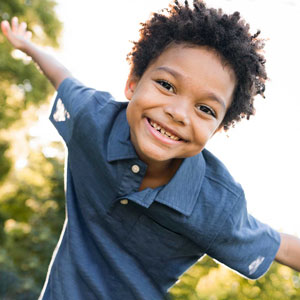Safe Sleep for Babies
Preventing Sudden Infant Death Syndrome (SIDS)
At Nemours Children’s Hospital, Delaware we want to help keep babies as safe as possible during their slumber. That’s why we're working with the State of Delaware and the Delaware Healthcare Association to raise awareness about the risks of sudden infant death syndrome (SIDS).
Facts About SIDS
SIDS is the sudden and unexplained death of a baby younger than 1 year old. Most SIDS deaths are associated with sleep. So we want to help parents and caregivers understand SIDS and prevent this kind of tragedy from ever affecting their family.
So what should parents and caregivers know about SIDS and other sleep-related causes of infant death?
- We’ve made great progress in reducing SIDS. The overall SIDS rate in the United States has dropped about 60 percent since the 1990s. That’s when the back-sleeping recommendations were first released and public awareness efforts began. Since then, the number of babies placed on their backs to sleep has tripled.
- Babies sleep safest on their backs. Babies who sleep on their backs are much less likely to die of SIDS than babies who sleep on their stomach or sides.
- Every sleep time counts. Babies should sleep on their backs for naps and at night. Babies who are used to sleeping on their backs, but then are placed on their stomachs are at a very high risk for SIDS.
- Sleep surface and sleep environment matter. Babies who sleep on a soft surface (such as on an adult mattress or under a soft covering like a soft blanket or quilt) are more likely to die of SIDS or suffocation. These deaths also are more likely when soft objects, toys and blankets are in the baby's sleep area.
What Can I Do to Prevent SIDS?
How can I lower my baby's risk of SIDS and other sleep-related causes of death? There’s no guaranteed way of preventing SIDS. But parents and caregivers can take steps to reduce the risk.
- Always place your baby on their back, for naps and at night.
- Use a firm and flat sleep surface such as a mattress in a crib, bassinet or play yard that follows Consumer Product Safety Commission (CPSC) safety standards.
- Breastfeed your baby. Learn More at Nemours® KidsHealth®
- Share your room with your baby. Keep them in your room close to your bed, but on a separate surface designed for infants — ideally for your baby's first year, but at least for the first six months.
- Do not put soft objects, toys, crib bumpers, or loose bedding under or over your baby or anywhere in their sleep area. Learn More
Best Practices to Keep Babies Safe While Asleep
At Nemours Children’s Hospital, Florida we purposefully use equipment and techniques to reduce the risk of injuries and Sudden Infant Death Syndrome (SIDS) during sleep.


